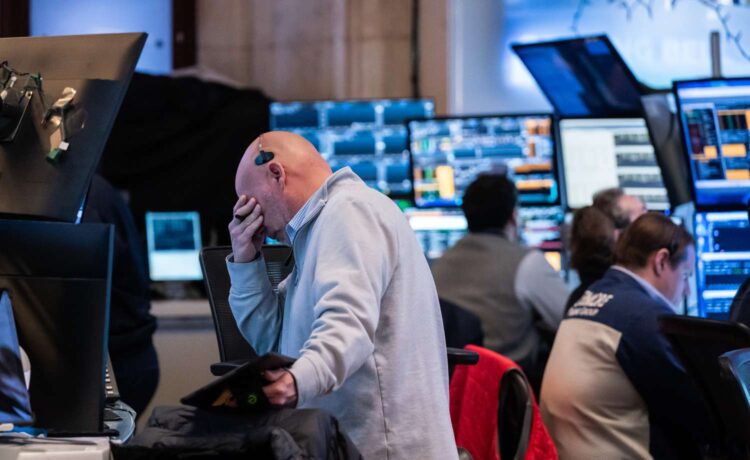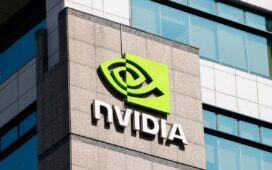United Finds Growth in Premium, International Offerings
31 minutes ago
Demand for international flights and premium seats is powering growth for United Airlines (UAL).
In its first-quarter report released Tuesday, the Chicago-based carrier swung to an adjusted profit of 91 cents per share on revenue that grew more than 5% year-over-year to record $13.21 billion.
The stronger-than-expected results were led by growth at the front of the plane and on long-haul flights. Premium cabin revenue rose 9.2% year-over-year, United reported, and international passenger revenue per available seat mile (PRASM) was up 5.2%, including an 8.5% increase in the Pacific.
“The market is down in recent months, but the high-end consumer, the more wealthy consumer, the one that takes the global vacations, the one that wants to sit in a premium seat seems to be less impacted so far,” Chief Commercial Officer Andrew Nocella said during Wednesday’s earnings call, according to a transcript from AlphaSense. “And I think that’s really good for our business, and it’s consistent with our brand and winning these customers to begin with.”
Charly Triballeau / AFP / Getty Images
CFO Mike Leskinen added, “I think probably at the industry level with a real mix shift in our premium cabins, we have less corporate and we have more premium leisure. And I believe that piece of our business is showing some great resilience as well. So, a lot of secular trends are accruing to our benefit.”
United shares surged close to 6% in early trading Wednesday, before paring back gains later in the session to close flat amid the broader market decline.
The gains on international flights are helping make up for declines in the U.S. United reported domestic PRASM fell 3.9% from a year ago amid an “uncertain macroeconomic environment.”
In response, the carrier said it was “removing 4 points of scheduled domestic capacity starting in the third quarter,” and issued “bimodal” guidance.
“The bulk of issue we’re seeing today is demand for domestic flights, particularly in the main cabin,” Nocella said. “And that’s where the challenge will be in Q2 as it was in Q1, and it’s going to be clearly a negative RASM environment for domestic in Q2 based on everything we see right now.”
Why Gold Surged to Another Record High on Wednesday
49 minutes ago
Gold prices rose to another record high on Wednesday as stocks tumbled after AI chip giant Nvidia warned its earnings would take a $5 billion hit from escalating tensions between the U.S. and China.
Gold futures contracts were up more than 3% at a record high of about $3,350 an ounce on Wednesday afternoon.
Gold prices have soared more than 25% since the start of the year as investors have flocked to safe havens amid mounting uncertainty about tariffs and their economic fallout. Gold ETFs recorded net inflows every week but one in the first quarter, with demand jumping to its highest level since 2022 in late February and again in late March.
TradingView
President Trump’s announcement earlier this month of sweeping “reciprocal” tariffs may push demand even higher in April. In the week after Trump’s tariff announcement, 49% of fund managers surveyed by Bank of America labeled “long gold” Wall Street’s most crowded trade. It was the first BofA Global Fund Manager Survey in two years in which “long Magnificent Seven” wasn’t thought to be the most popular trade. The preponderance of fund managers (42%) think gold will be the best-performing asset of 2025.
“The case for adding gold allocations has become more compelling than ever in this environment of escalating tariff uncertainty, weaker growth, higher inflation, geopolitical risks & diversification away from US assets & the US$,” wrote UBS analysts in a note on Monday.
“We acknowledge the poor historical operational/cost performance of gold miners but remain bullish gold equities,” the analysts continued. Shares of Newmont (NEM) and Barrick Gold (GOLD) both followed gold prices higher on Wednesday.
There are several reasons to expect the recent run-up to persist, according to the World Gold Council, a gold miner trade association.
First of all, central banks have been key drivers of demand for gold over the past few years, and researchers don’t expect them to let up soon. Investors are also historically underexposed, with gold ETFs accounting for just 1.6% of the value of all U.S. ETFs, compared with 7.6% in 2011—the peak of a rally comparable to today’s. Plus, geopolitical and economic uncertainty are likely to remain elevated as the end of the White House’s 90-day tariff pause approaches.
Risks to the rally include the possibility that soaring prices slow demand from investors and central banks, or that a liquidity crisis—of which the analysts see increasing risk—could force investors to sell gold to cover margin calls. The resolution of trade tensions through bilateral agreements could also reignite investors’ risk appetite and act as a headwind to gold.
Powell Emphasizes Inflation Risks of Trump Trade War
1 hr 25 min ago
The Federal Reserve appears to be bracing for a fresh surge of inflation from President Donald Trump’s campaign of tariffs.
In a speech to the Economic Club of Chicago Wednesday, Fed Chair Jerome Powell said officials at the central bank expect the import taxes Trump imposed this month to push up the cost of living and are determined not to let that bout of price increases turn into a prolonged period of inflation.
“The tariffs are larger than forecasters had expected, certainly larger than we expected, even in our upside case,” Powell said.
Powell’s remarks shed light on the Fed’s possible response to the rapidly changing trade war. Powell said trade policy could be a setback to both sides of the Fed’s “dual mandate” to keep inflation under control and joblessness in check. Powell suggested the Fed wasn’t ready to jump in to boost financial markets and the economy by cutting interest rates—at least not yet.
Kamil Krzaczynski / AFP / Getty Images
Powell echoed the recent comments of other Fed officials, saying the tariff war could pose a “challenging” scenario by slowing down the economy while pushing up prices.
The Fed’s main tool for managing the economy is raising or lowering the federal funds rate, which influences borrowing costs on all kinds of loans. A higher fed funds rate means more costly loans, and a slower economy, reducing inflation pressures. A lower fed funds rate means easy money and a boost to the job market.
The Fed has been keeping the rate high in recent years to combat the post-pandemic surge of inflation, and Powell’s remarks indicated the Fed would be reluctant to cut rates even if financial markets took a dive.
When asked whether the Fed would step in with rate cuts if markets plunged, Powell said, “No, with an explanation”—markets were functioning in an orderly fashion and predictably responding to the uncertainty surrounding the rapidly changing tariff policies.
A tariff is, in theory, a one-time price increase, whereas inflation is, by definition, a sustained increase in prices.
By that logic, central bank doctrine dictates the Fed should “look through” tariff-driven price increases and not necessarily raise interest rates or keep them high in response. However, Powell said the central bank’s experience during the pandemic challenged that logic.
For example, he said, disruptions in the supply of computer chips affected car prices, which were a major reason overall inflation surged in 2022. He said the Fed was determined not to let that happen again.
“Our role is to make sure that this is a one-time increase in prices and not something that turns into an ongoing inflation process,” he said.
The Tricky Task of Providing Guidance These Days
2 hr 13 min ago
There’s guidance, and there’s ‘If There’s a Recession’ guidance.
We got both from United Airlines (UAL) yesterday when the airline offered second-quarter adjusted earnings per share (EPS) guidance—a range of $3.25 to $4.25 per share—and full-year adjusted EPS guidance for both a “stable environment” and a “recessionary environment” while swinging to a first-quarter profit. (The midpoints of both outlooks, presented as ranges, are above Visible Alpha’s current mean analyst estimates.)
“The company’s guidance is based on consensus market macroeconomic expectations,” the company wrote. “However, a single consensus no longer exists, and therefore the company’s expectation has become bimodal—either the U.S. economy will remain weaker but stable, or the U.S. may enter into a recession.”
United’s decision illustrates the uncertainty faced by companies seeking to navigate a fast-changing trade environment. That uncertainty has prompted investors and analysts to wonder if companies will not only be cautious in issuing outlooks as they report quarterly results in the coming days and weeks—but whether they’ll issue them at all.
Companies “tend to shut down guidance amid uncertainty,” Bank of America analysts said last week.
There’s some early data out there, though it’s not particularly conclusive. FactSet in a Monday note said that 16 of the 23 S&P 500 companies to report results through April 10 had discussed guidance, with 14 of those giving out some numbers for the 2025 or 2026 fiscal years. Two, meanwhile, pulled back previous guidance. One had a straightforward reason: Walgreens (WBA) is being acquired.
The other was another airline. Delta Air Lines (DAL) gave out an outlook for the current quarter, but chose not to give out full-year guidance, saying in a statement that “given the lack of economic clarity, it is premature at this time to provide an updated full-year outlook.”
Other companies that have lately withdrawn their own guidance include Frontier Group Holdings (ULCC), the parent company of the airline with the same name, and Logitech (LOGI), the electronics maker.
Read the full article here.
Abbott Labs Stock Jumps on Strong Earnings
2 hr 48 min ago
Abbott Laboratories (ABT) shares surged Wednesday after the medical device maker topped Wall Street’s expectations with its first-quarter results and said it plans to invest $500 million in U.S. operations.
The company said Wednesday that two new manufacturing and R&D facilities in Texas and Illinois are set to open this year. Abbott expects to hire up to 200 people in Illinois and 100 in Texas for the projects, a spokesperson said.
Shares of Abbott were up close to 4% in recent trading, making the stock one of the S&P 500‘s top daily performers. They’ve added about 20% over the past 12 months, far outpacing the S&P 500’s gains over that period.
TradingView
Abbott reported first-quarter revenue of $10.4 billion, up 4% year-over-year and roughly in line with the analyst consensus from Visible Alpha. Adjusted net income of $1.92 billion, or $1.09 per share, compared with $1.73 billion, or 98 cents per share, a year earlier, topping Wall Street’s estimates. Medical device sales jumped 10% to $4.9 billion, also beating expectations.
Looking ahead, Abbott maintained its full-year adjusted earnings per share (EPS) estimate of $5.05 to $5.25, versus the analyst consensus of $5.16. CEO Robert Ford said Abbott Labs had considered raising its EPS outlook prior to the Trump administration’s recent announcements on tariffs, according to a transcript of the company’s earnings call provided by AlphaSense.
Boeing Price Levels to Watch Amid U.S.-China Trade Spat
3 hr 20 min ago
Boeing (BA) shares remained in focus Wednesday as investors digested yesterday’s reports that China told its airlines not to take more deliveries of the American company’s jets amid an intensify trade war between Washington and Beijing.
The development adds to a difficult 12 months for the plane maker’s stock, which has struggled to gain investors’ confidence after several highly publicized safety and manufacturing mishaps, compounded by a seven-week machinists strike, all of which weakened the company’s balance sheet.
Boeing shares were up 0.5% at around $156 in mid-afternoon trading Wednesday. The stock has lost about 11% of its value since the start of the year.
Tariff-driven selling in Boeing shares saw the price temporarily drop last week below the prominent November swing low, before promptly rebounding above that level to potentially form a double bottom.
More recently, the stock has drifted mostly sideways since last Wednesday’s wide-ranging day, with the relative strength index (RSI) providing a reading just below the 50 threshold to signal neutral price momentum.
Investors should watch important support levels on Boeing’s chart around $146 and $137, while also monitoring crucial resistance levels near $166 and $187.
Read the full technical analysis piece here.
Oppenheimer Starts Lift at ‘Outperform’
4 hr 16 min ago
Oppenheimer analysts on Wednesday initiated coverage of Lyft (LYFT) with an “outperform” rating, writing that they expect the company to benefit as ridesharing continues “to challenge the rising cost of car ownership.”
The analysts gave Lyft a $15 price target, a premium of about 38% to the stock’s closing price Tuesday. Of the 15 analysts who currently cover Lyft tracked by Visible Alpha, four—including Oppenheimer—have “buy” or equivalent ratings, 10 have “hold” ratings, and one has a “sell” rating, with a price target range of $12 to $24.
Oppenheimer wrote that Lyft could benefit as younger, frequent users of its app continue to age and rely on its services as car ownership continues to get more expensive. They also said Lyft and rival Uber (UBER) should see lower costs as autonomous driving technology improves and the companies partner with self-driving vehicle makers to offer rides through their apps.
Also on Wednesday, Lyft announced a 175-million-euro ($199.1 million) acquisition of FREENOW, a ridesharing service that operates in nine countries in Europe, from BMW Group and Mercedes-Benz Mobility. Lyft said the deal is set to close in the second half of this year.
TradingView
Shares of Lyft, which is set to report its latest quarterly results after the bell on May 8, were up nearly 2% at $11.10 in recent trading. The stock has declined roughly 40% in the past 12 months.
Economists Divided on How Likely a Recession Is
5 hr 12 min ago
Economists are split on whether President Donald Trump’s tariffs will drag down the economy enough to cause a recession.
Some see a downturn as a likely possibility as increased costs from tariffs hurt businesses and consumers.
Others think the economy is strong enough to weather the trade war without a recession, with employment and consumer spending remaining resilient.
Read the full article here.
JB Hunt Drops as Execs Warn Tariffs Could Hit Demand
6 hr 43 min ago
Shares of J.B. Hunt Transport Services (JBHT) fell Wednesday morning as comments from executives on the potential impact of tariffs outweighed an estimate-beating first quarter.
The trucking company on Tuesday reported first-quarter revenue of $2.92 billion and earnings per share (EPS) of $1.17, both down year-over-year but just above analysts’ consensus estimates compiled by Visible Alpha.
Several J.B. Hunt executives spoke on the late-Tuesday earnings call about how tariffs are affecting demand from its customers, as well as its own costs. CEO Shelley Simpson said the company’s leadership “has explored various options” to “more aggressively eliminate costs in some of our scenario planning analysis,” according to a transcript provided by AlphaSense.
J.B. Hunt shares sank 6.5% in premarket trading Wednesday. They entered the day having lost more than 20% of their value since the start of the year.
Executive Vice President of Sales and Marketing Spencer Frazier said that tariffs “have the potential to impact both supply and demand, but the magnitude and timing is difficult to predict,” according to AlphaSense.
“Our customers continue to plan for multiple what if scenarios, but most of them are waiting for the dust to settle to determine how tariffs might influence and change their short- and long-term business strategies,” Frazier added. “As part of this scenario planning process, some customers are considering ways to alter supply chain freight flows and/or their country of origin sourcing. But these changes will be part of a much longer decision process.”
Some customers are adjusting their supply chain in a number of ways like bringing in some shipments ahead of schedule, changing where they get products from, or possibly delaying or canceling some orders, Frazier said.
TradingView
JB Hunt shares were down about 7% in early trading. The stock has lost more than a quarter of its value since the start of the year, far outpacing the decline of the S&P 500 over the period.
Nvidia to Record $5.5B Charge on China Export Crackdown
7 hr 30 min ago
Nvidia (NVDA) said it expects to take a $5.5 billion charge in its fiscal 2026 first-quarter results after the U.S. limited exports of its artificial intelligence (AI) chips to China.
The news, the latest salvo in an escalating trade war between Washington and Beijing, sent the firm’s shares tumbling more than 5% in early trading.
The company said in a regulatory filing late Tuesday that it was informed by the U.S. government on April 9 that it would be required to have an export license “for the indefinite future” to sell its H20 chips to China. Nvidia said the license requirement is aimed at addressing the risk that the chip would be “used in, or diverted to, a supercomputer in China.” The chip is less powerful than its newer ones and tailored to meet existing export limits for the Chinese market.
Bridget Bennett / Bloomberg / Getty Images
Nvidia’s Q1 results, which are expected May 28, are set to include the $5.5 billion charge “associated with H20 products for inventory, purchase commitments, and related reserves,” it said. According to Morningstar Research, “China has shrunk to about 10% of Nvidia’s revenue from 20%, and we now expect it to go to close to zero.”
The New York Times reported that a spokesman for the U.S. Commerce Department said “that the administration was issuing new export licensing requirements for the Nvidia H20; a chip from Advanced Micro Devices, the MI308; and their equivalents.”
AMD (AMD) shares also were down about 5% this morning.
Major Stock Index Futures Point to Lower Open
8 hr 24 min ago
Futures tied to the Dow Jones Industrial Average were down 0.1%.
TradingView
S&P 500 futures slipped 0.7%.
TradingView
Nasdaq 100 futures dropped 1.4%.
TradingView





